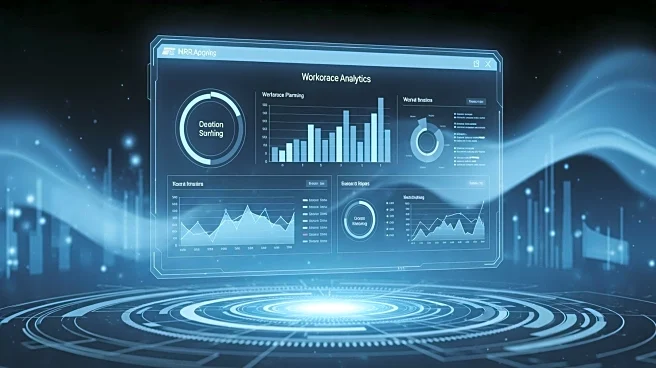What's Happening?
The People Analytics & Workforce Intelligence market is experiencing significant growth, driven by key players such as Visier and Workday. According to a recent market study, the sector is projected to expand
at a compound annual growth rate (CAGR) of 9.8% from 2025 to 2032, increasing from $8.5 billion in 2025 to $18 billion by 2032. The market is characterized by the use of advanced analytics and AI to provide insights into employee performance, engagement, retention, and productivity. This growth is fueled by the demand for real-time, data-driven insights, hybrid work models, and an emphasis on diversity, equity, and inclusion (DEI) metrics. North America is currently the dominating region, while Asia Pacific is the fastest-growing region.
Why It's Important?
The expansion of the People Analytics & Workforce Intelligence market is crucial for organizations seeking to optimize their workforce strategies. By leveraging predictive insights and recommendations, companies can make informed HR decisions that enhance employee engagement and productivity. The growth in this market reflects a broader trend towards digital transformation and the integration of AI in business processes. As organizations increasingly adopt hybrid work models, the need for robust workforce analytics becomes more pronounced, offering opportunities for improved strategic HR planning and DEI initiatives. This shift has implications for HR departments, technology providers, and the overall business landscape.
What's Next?
As the market continues to grow, companies are likely to invest more in analytics tools that empower HR and team leaders. The integration of sentiment and well-being data into workforce dashboards is expected to become more prevalent, providing deeper insights into employee satisfaction and retention. Additionally, the democratization of analytics tools through cloud adoption will enable small and medium enterprises (SMEs) to access advanced workforce intelligence solutions. This expansion into emerging markets and smaller enterprises presents new opportunities for growth and collaboration across HR, finance, and operations.
Beyond the Headlines
The rise of People Analytics & Workforce Intelligence also raises ethical and privacy concerns regarding employee data monitoring. Organizations must navigate these challenges carefully to ensure compliance with data protection regulations and maintain trust with their workforce. The integration of AI in workforce analytics could lead to long-term shifts in HR practices, emphasizing data-driven decision-making and strategic planning. As companies continue to adopt these technologies, the role of HR is likely to evolve, focusing more on analytics and less on traditional administrative tasks.











